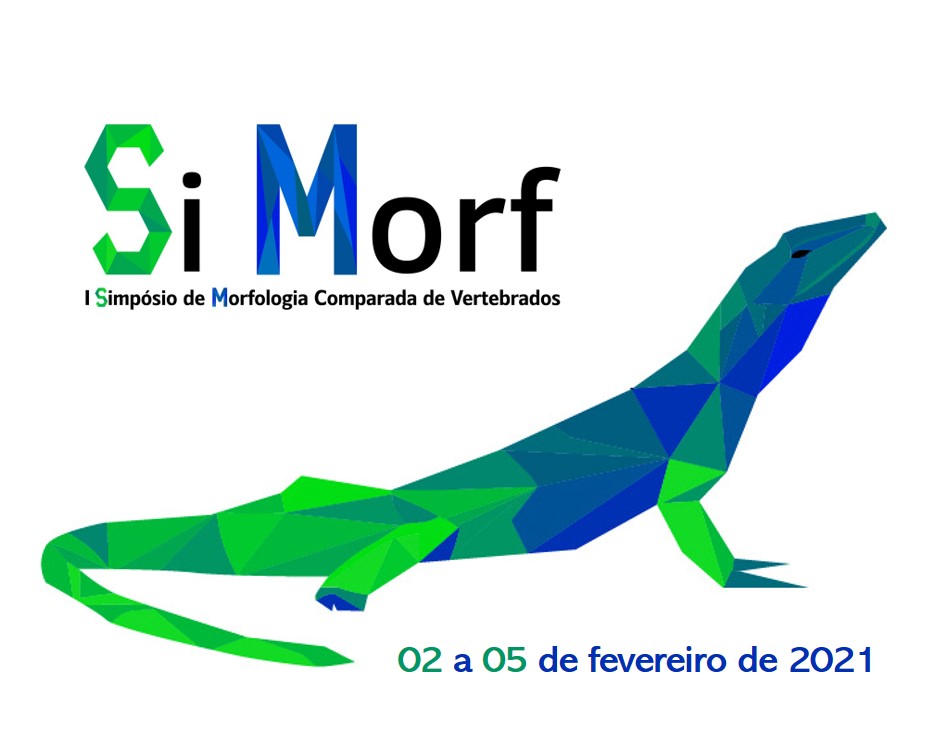Anais do I Simpósio Brasileiro de Morfologia Comparada de Vertebrados
Ontogenetic changes in cranial morphology of Eira barbara (Linnaeus, 1758) (Carnivora, Mustelidae)
Como citar esse trabalho?
Para citar este trabalho use um dos padrões abaixo:
Como citar esse trabalho?
- Tipo de apresentação: Apresentação Oral
- Eixo temático: Anatomia descritiva
- Palavras chaves: Cranial morphology; Development; Eira barbara; Mustelidae; Ontogeny;
Autoras(es):
Ontogenetic changes in cranial morphology of Eira barbara (Linnaeus, 1758) (Carnivora, Mustelidae)
Fernando Araujo Perini
Agora você poderia compartilhar comigo suas dúvidas, observações e parabenizações
Crie um tópico- Tipo de apresentação: Apresentação Oral
- Eixo temático: Anatomia descritiva
- Palavras chaves: Cranial morphology; Development; Eira barbara; Mustelidae; Ontogeny;
Autoras(es):
The tayra (Eira barbara) is a marten-like carnivore that occurs throughout the Neotropics. Despite many studies of age determination in mustelids, especially those with economic relevance, no ontogenetic studies are available for the tayra. This work aims to analyze the ontogenetic changes in the skull of E. barbara both in qualitative and quantitative terms. The skulls of 149 specimens from throughout the geographic distribution of E. barbara were analyzed, measured and photographed. The specimens were classified into four age categories based on tooth eruption and cranial suture closure patterns. The skulls were surveyed for qualitative differences between the age categories. Landmarks were digitized in lateral view with the software tpsDig and superimposed by Generalized Procrustes analysis to remove variation in position, size and orientation. A MANOVA was performed to evaluate to differences in shape for age category and sex. Both linear measurements and landmark data were subjected to Principal Component and Discriminant Analyses. All statistics were performed in the software PAST. Adult specimens show cranial sutures completely fused, but the timing is variable. Males and females showed slight dimorphism in cranial shape, and significant differences were also found for the age groups, especially the two earliest stages. Although multivariate analysis showed great overlap between age groups for shape, the discriminant analysis was able to separate them. No dramatic changes in cranial shape was found over ontogeny, and growth seems to concentrate mainly on the first stages. It seems that cranial shape in tayras is conservative and maintained throughout life, requiring few changes over development, maybe associated to its generalist habits and tropical habitat.
Discussões Científicas de Qualidade
Com ~200 mil publicações revisadas por pesquisadores do mundo todo, o Galoá impulsiona cientistas na descoberta de pesquisas de ponta por meio de nossa plataforma indexada.
Confira nossos produtos e como podemos ajudá-lo a dar mais alcance para sua pesquisa:
Como citar esse proceedings?
Esse proceedings é identificado por um DOI , para usar em citações ou referências bibliográficas. Atenção: este não é um DOI para o jornal e, como tal, não pode ser usado em Lattes para identificar um trabalho específico.
Verifique o link "Como citar" na página do trabalho, para ver como citar corretamente o artigo


